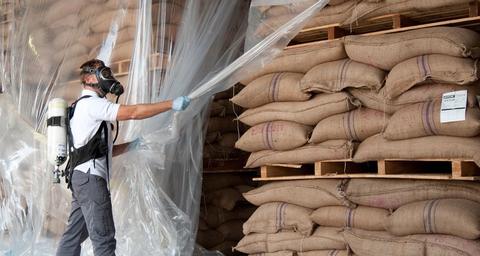There are many guidelines and legislation related to this issue, both nationally and internationally. They serve mainly to prevent the spread of the risks mentioned as well as to ensure the safety of personnel active in the sector.
Risks of international transport
International transport is subject to various factors, one of the riskiest being the infestation of goods by pests. These may be common ‘native’ species (house mice, brown rats, cockroaches, stored product moths, and beetles, etc.) or more exotic ones (black widows, etc.).
The damage can take different forms:
- Damage to the packaging or goods itself
- Contamination by droppings, nesting or urine
- Devaluation of the product
- Food poisoning due to contaminated food products
The economic damage and loss of image among customers can be significant.
Stored product insects
Certain stock goods such as coffee, tobacco, cocoa, rice, .... can be infested by several specific pests that require a tailored approach. In particular, we're talking about the ‘stock infestations’ that are a typical problem in the long-term storage of food goods. Stock insects like to lurk deep inside the goods. Just think of beetles in coffee bags, moths among cocoa beans, and beetles in wheat.
Residues
Another issue concerns the presence of residues of harmful substances, either residues from previous treatments of the goods (methyl bromide, phosphine, etc.) or of the goods themselves after production. These are residues of solvents such as benzene, toluene,.... Substances that pose a risk to the staff responsible for loading/unloading the goods.
Professional fumigation by certified expers
Fumigation of goods, furniture, and transport containers often requires the necessary training and certificates. The most important is recognition as an authorized user or fumigation leader by FOD Public Health and recognition by Customs and Excise as a gas measurement company.
Each company should have an integrated approach going from customs clearance to shipping/sealing of the goods. The starting point here is proofing, monitoring, and inspection.
After all, early detection and identification are crucial in determining the further approach and can avoid a lot of additional damage and costs.
